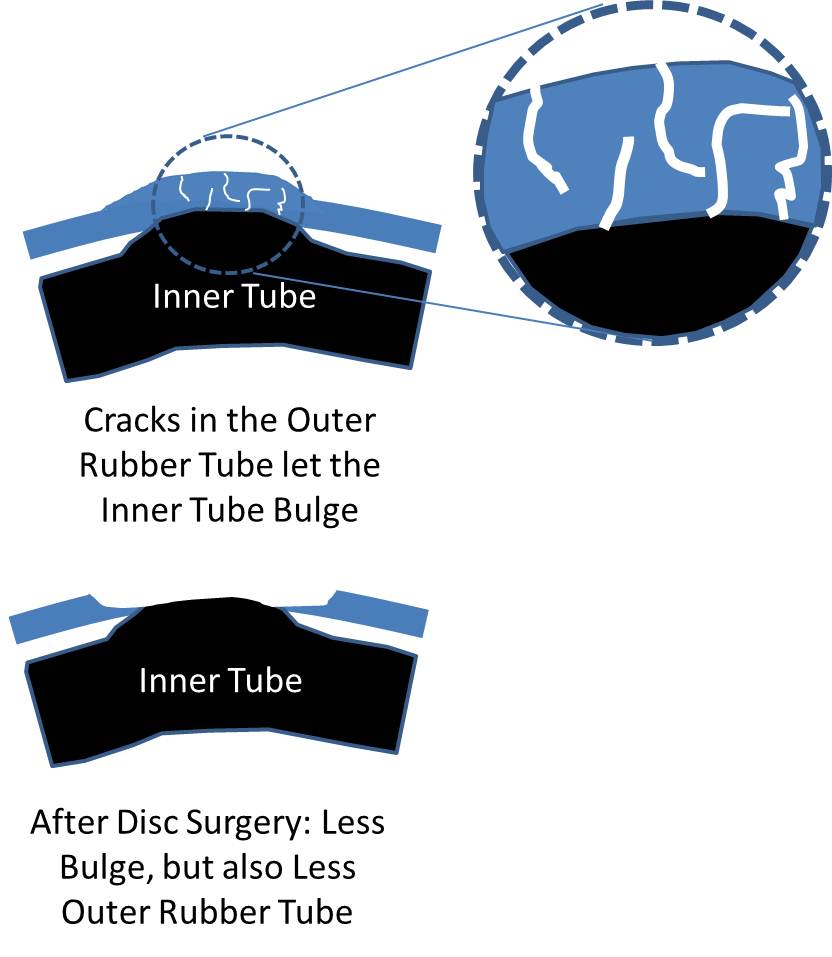Why Back Surgery Backfires
Interesting article this week posted at MSNBC.com about a recent study of patients undergoing low back surgery. The study demonstrated that of those patients who opted for back surgery, only 26% went back to work compared to 67% of the patients who didn’t get surgery. There was also an increase in the use of pain medications after surgery. As we have always said, for a very few patients, low back surgery can be a Godsend. However, that’s only about 1-2 in 10 (IMHO) of the patients currently undergoing back surgery. The problem with conventional low back surgery is that it either cuts out parts of the disc or fuses together vertebral segments that were built to move. By taking out parts of the disc, the surgery weakens the disc and makes it more likely to fail. To understand this phenomenon, think of the low back disc like a bicycle tire. As illustrated above, the thick outer rubber tube can develop cracks and tears which let the inner tube bulge out (just like a disc bulge). Rather than fixing the cracked outer rubber part, our current surgical approach just lops off a piece of the outer rubber tube (the part pressing on a nerve), making the tire less durable and more likely to fail. Low back surgery does the same thing, no matter if it’s through a scalpel or a laser. In the case of the low back, the outer rubber tube is the disc annulus (outer part of the disc) and the inner tube is the nucleus pulposis (inner rubbery gel part). Is there a better way? We believe in using a low back surgery alternative by either injecting substances to help the disc area heal (like the Regenexx-PL-Disc procedure) or to help heal the cracks (like the Regenexx-C-Disc stem cell procedure). We’ve seen significant improvement in low back discs by simply injecting the patient’s own specially grown stem cells into these tears. The upshot? Looking at the bicycle example, it’s no wonder why back surgery backfires.

If you have questions or comments about this blog post, please email us at [email protected]
NOTE: This blog post provides general information to help the reader better understand regenerative medicine, musculoskeletal health, and related subjects. All content provided in this blog, website, or any linked materials, including text, graphics, images, patient profiles, outcomes, and information, are not intended and should not be considered or used as a substitute for medical advice, diagnosis, or treatment. Please always consult with a professional and certified healthcare provider to discuss if a treatment is right for you.

